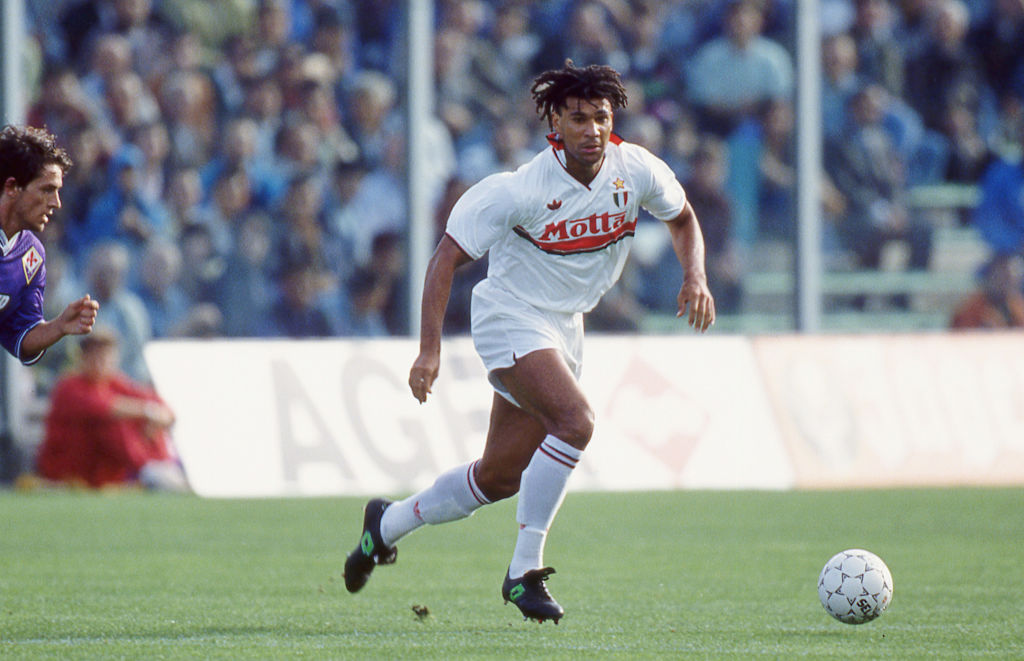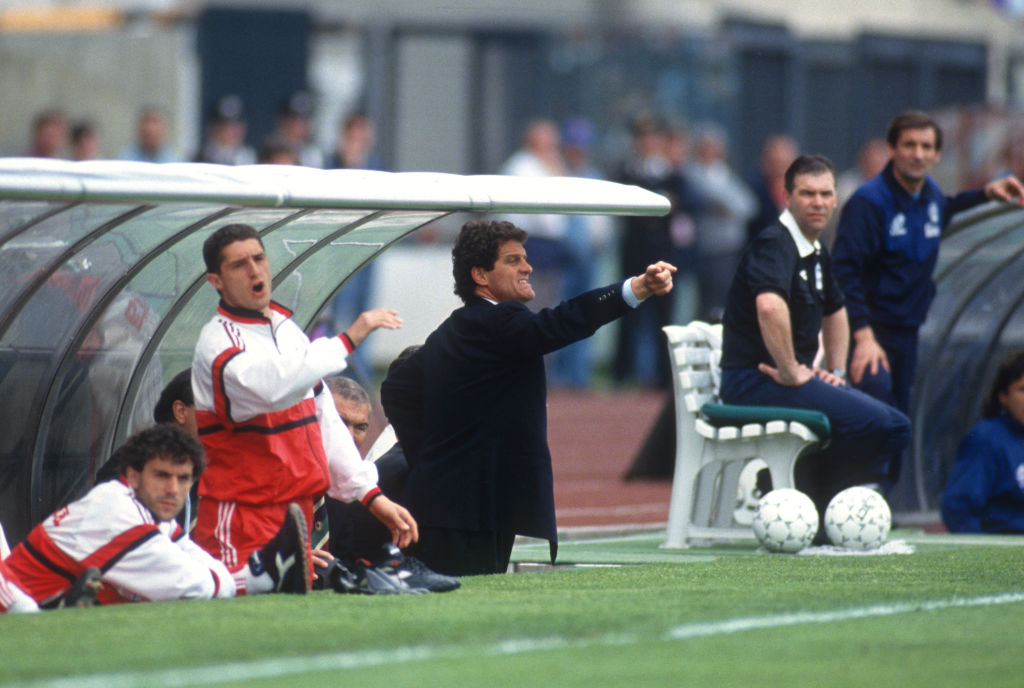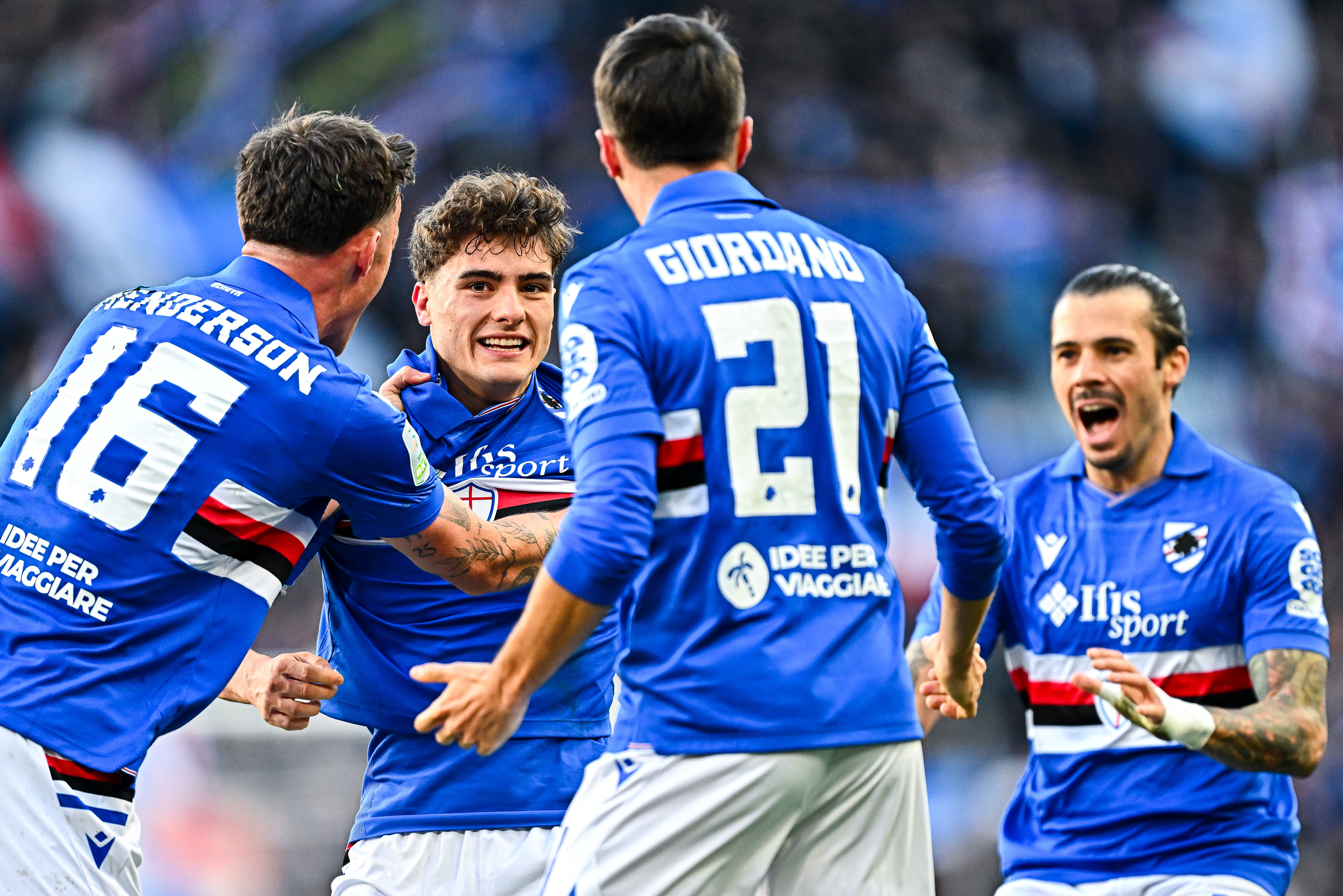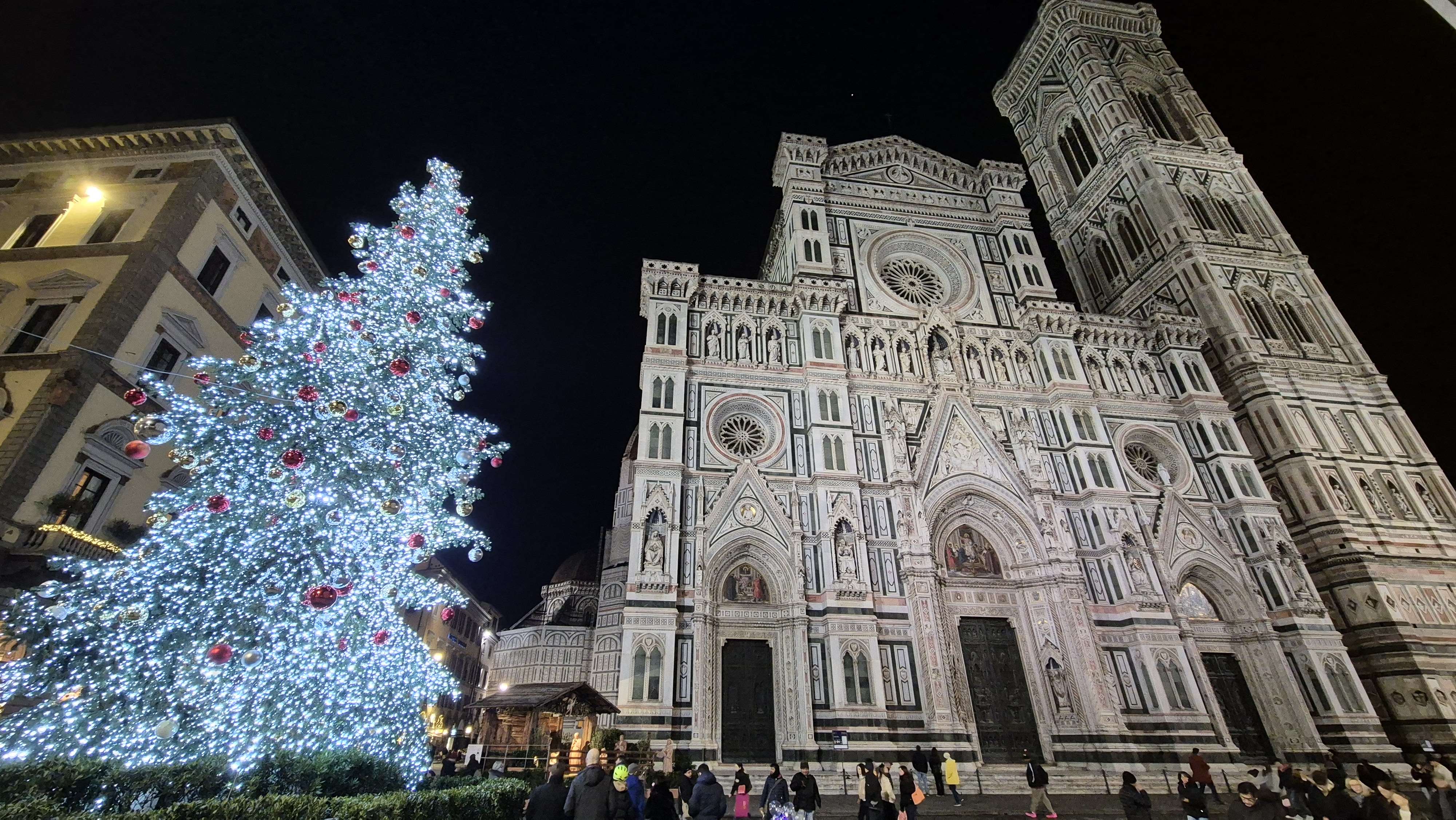
Classic Calcio: Fiorentina 3-7 AC Milan, October 1992
By Dan Cancian
AC Milan travel to Florence to face Fiorentina on Sunday night and if the fixture delivers anything remotely resembling the spectacle it produced in 1992, it may be worth clearing up your schedule.
Friday marked the 32nd anniversary of an extraordinary day in Serie A’s rich history, with a staggering 48 goals scored across nine matches – a record for the division in its 18-team format.
Serie A may have boasted the finest attacking talents on the planet over the 1980s and 1990s, but the shackles of catenaccio proved hard to break.
But while defensive solidity may have been the league’s raison d’etre on the surface, a veritable attacking storm was bubbling underneath.
The average goal per game in Serie A had risen steadily from 1.93 in the 1986-87 season to 2.27 in the 1991-92 campaign.
The introduction of the back pass rule after Euro ‘92 did the rest, taking away the safety blanket teams relied upon for so long.
In the first Serie A season under the new law, the goals per game ratio soared to 2.8 and nowhere was the new-found emphasis on attacking football more evident than on October 4.
Of the 18 teams in the division, only Roma and Atalanta failed to find the back of the net, falling to 1-0 defeats away to Cagliari and Inter Milan, respectively.
But goals flowed everywhere else around the Peninsula at such a rate that compiling the highlights reel for 90esimo Minuto (90th Minute, Italy’s version of Match of the Day) must have been nigh-on impossible.
Brescia thrashed Foggia 4-1 at home, while Roberto Baggio and Gianluca Vialli were on the scoresheet as Juventus won 3-2 in Naples.
Lazio and Udinese both recorded 5-2 wins against Parma and Pescara respectively, while Torino’s home draw with Sampdoria produced four goals and Genoa and Ancona shared eight goals in a thrilling draw at Marassi.
Remarkably, all of the above paled in comparison to what unfolded in Florence where Milan and Fiorentina combined for 10 goals, with the visitors accounting for seven of them.
Not that it was entirely surprising, for Fiorentina and Milan had combined for 30 goals in their seven games up to that point – the Rossoneri’s trip to face Sampdoria in Genoa on matchday four had been postponed due to floods that battered Liguria.
Despite having played one fewer game than the rest of Serie A, Fabio Capello’s men arrived in Florence sitting top of the table alongside Torino.
The Granata had been the focus of the summer transfer window and for all the wrong reasons.
Only months removed from finishing fifth in Serie A and losing the UEFA Cup final on away goals to Ajax, the quicksands Torino president Gian Mauro Borsano had built his empire on began to shift.
A man with lofty aspirations, Borsano played fast and loose with accountancy rules and ultimately paid the price.
Out went Giorgio Bresciani, Roberto Cravero, Roberto Policano and Silvano Benedetti. But it was the sale of Gianluigi Lentini that dominated the headlines.
The 23-year-old had emerged as the biggest star in Emiliano Mondonico’s team, a winger of such natural talent he seemed to simply glide past players at will.
With Torino desperately needing to balance the books, Borsano sanctioned Lentini’s sale.
Juventus and Milan were both among the suitors, but selling Lentini to Torino’s bitter rivals was a bridge not even Borsano was prepared to cross.
The Bianconeri’s loss was Milan’s gain and Lentini made the short journey eastbound on the A4 motorway for a then-world record fee of £13m.
He was joined at Milanello by an impressive cast of new signings, which included Yugoslavia international Dejan Savicevic and France striker Jean-Pierre Papin, who had won the Ligue 1 title in the previous four seasons with Olympique Marseille.
Fiorentina, meanwhile, welcomed the arrivals of German international Stefan Effenberg and Denmark great Brian Laudrup, the latter a newly-crowned European champion.
With Luigi Radice now into his second season of his second spell in charge, La Viola harboured hopes of securing a European spot after finishing the previous campaign in 12th.
And the early omens were good, as Fiorentina arrived into the game against Milan still unbeaten, courtesy of draws against Gena, Inter and Lazio and a 7-1 thrashing of Ancona.
Decked in all white with the Adidas trefoil on their chest, Milan carried all the swagger of a team that had just won the Scudetto the previous season without losing a game in Fabio Capello’s first campaign in charge.
With 14 minutes on the clock, the fuse was lit at the Stadio Artemio Franchi as Francesco Baiano tapped home after Milan keeper Francesco Antonioli stopped Gabriel Batistuta in his tracks.
Barely 10 minutes had elapsed by the time Daniele Massaro headed a Mauro Tassotti cross home to equalise.
Capello’s reputation for being defensive-minded was sorely tested in Florence when Milan lined up with an outrageously offensive 4-4-2, which featured Lentini and Ruud Gullit as wingers in support of Massaro and Marco Van Basten.
Lentini and Gullit both had licence to roam and combined superbly for Milan’s second, the Dutchman’s slide-rule pass splitting Fiorentina’s defence wide open before the then-world’s most expensive player produced an impudent chip to take the ball past Alessandro Mannini.
From provider Gullit then turned finisher himself eight minutes later, his daisy-cutter beating Mannini at the far post.

With Fiorentina rocking like a heavyweight desperate to be rescued by the bell, Milan moved in for the sucker punch with Gullit and Massaro again involved as the Dutchman broke free down the right, before setting up the easiest of tap-ins for the Italy international.
A former Fiorentina player himself, Massaro never arguably got the credit his 70 goals in 306 appearances for Milan deserved. A Swiss knife of a forward, Massaro won 13 major trophies with the Rossoneri, including four Serie A titles and two European Cups.
Trailing 4-1 at half-time, Fiorentina came out all guns blazing in the second half and within three minutes they were back in the game as Effenberg nodded home from close range to cut the deficit to two.
As he looked to retrieve the ball, the German then squared off against Sebastiano Rossi, who had replaced Antonioli at half-time, and the two renewed their duel shortly afterwards, with the Milan keeper tipping the German’s piledriver over the bar.
With the visitors momentarily taking their foot off the gas, Fiorentina came forward again, only to again be denied by Rossi, who produced a smart save to deny Fabrizio Di Mauro from close range.
Milan had allowed a meagre 21 goals en route to the Scudetto the previous term, but, ahead of the trip to Florence, Antonioli had already conceded four times in three matches, all coming in a dramatic 5-4 win against Pescara on the second week of the season.
Could Fiorentina do what Pescara could not and pull off a memorable comeback? The answer was a decisive no, as Van Basten shut the door on La Viola.
After Gullit had a goal ruled out for offside, his fellow Dutchman found himself in acres of space after receiving a pass from Alberigo Evani and dispatched the ball past Mannini with a blistering strike from 18 yards out.
Eight minutes later, Van Basten turned provider, his cross evading Fiorentina defence and finding Gullit unmarked at the far post, who dutifully converted with a spectacular diving header.

There was still time for Di Mauro to finally have the better of Rossi as he blasted home from close range after being set up by Effenberg before Milan produced arguably the best goal of the afternoon.
Unsurprisingly, Gullit was again in the thick of the action, releasing Tassotti with a smart flick.
The Rossoneri right-back reached the byline and crossed for Van Basten, who displayed all of his balletic grace to control the ball with his right, before shifting to his left foot and finishing past Mannini to complete his brace.
“Super Gullit, Super Milan,” was how Gazzetta dello Sport summed up the afternoon in Florence, noting that the city had been “Italy’s goal capital in a Sunday for the history books”.
High-scoring matches became Milan’s calling card that season, with the Rossoneri beating Lazio 5-3 at the San Siro only weeks later and then trouncing Napoli 5-1 at the San Paolo just over a month after their exploits in Florence.
Fiorentina (4-3-3): Mannini – Carnasciali, Carobbi, Verga, Faccenda – Di Mauro, Orlando, Effenberg – Laudrup, Baiano, Batistuta. Coach: Luigi Radice
Milan (4-2-2-2): Antonioli – Tassotti, Maldini, Baresi, Costacurta – Albertini, Rijkaard – Lentini, Gullit – Massaro, Van Basten. Coach: Fabio Capello
Milan eventually retained the Scudetto, albeit not in as dominant a fashion as they had done the previous season.
At one stage, the Rossoneri went seven games without a win and their 58-match unbeaten run was ended by a trademark Faustino Asprilia free-kick in March.
Fiorentina, meanwhile, were joint-second as the calendar moved into 1993, but imploded spectacularly in the second half of the season and were eventually relegated on the final day of the campaign.
Click to watch our Milan Derby podcast on DC TV:
Related Articles
Related Articles
The Serie B season reaches halfway when the action returns after the winter break, with more live matches to look forward to on DCTV.
Florence is a dream destination year-round, but visiting during the winter months offers a completely different and magical experience.
We get a local take on what's hot in Cremona - where to eat and drink, sights to see and handy hints that might not be in the tourist guides.




